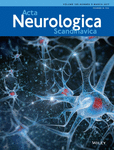Acute cerebral infarcts in multiple arterial territories associated with cardioembolism
Abstract
Objectives
It is generally believed that cardioembolism is the main cause of multiple acute cerebral infarcts (MACI). However, there are surprisingly few DWI studies and results are conflicting. Based on a large prospective study we hypothesized that MACI are associated with cardioembolism.
Materials and methods
We studied 2697 patients with acute cerebral infarcts between February 2006 and October 2013 who were prospectively registered in The Bergen NORSTROKE Registry. Among them, 2220 (82.3%) patients underwent magnetic resonance imaging (MRI) and 2125 (96%) of these 2220 patients had DWI lesions. Only patients with DWI lesions were included. MACI were defined as at least two DWI lesions in at least two different arterial territories.
Results
MACI were detected in 187/2125 (8.8%) patients with DWI lesions. MACI patients were older and more often females. MACI were associated with cardioembolism (P = 0.042), especially atrial fibrillation (P = 0.002). Other associations were symptomatic internal carotid artery (ICA) stenosis (P = 0.014), asymptomatic ICA stenosis (P = 0.036), and higher NIHSS score on admission (P < 0.001). Among patients with no cardioembolism, 34 (35%) with MACI had symptomatic ICA stenosis versus 268 (25.0%) with non-MACI (P = 0.037); 20 (20%) with MACI had asymptomatic ICA stenosis versus 134 (13%) with non-MACI (P = 0.031). In the logistic regression analysis, cardiac embolism and symptomatic ICA stenosis were independently associated with MACI.
Conclusions
Acute cerebral infarcts in more than one arterial territory occur among almost 10% of the patients and are associated with cardioembolism.




